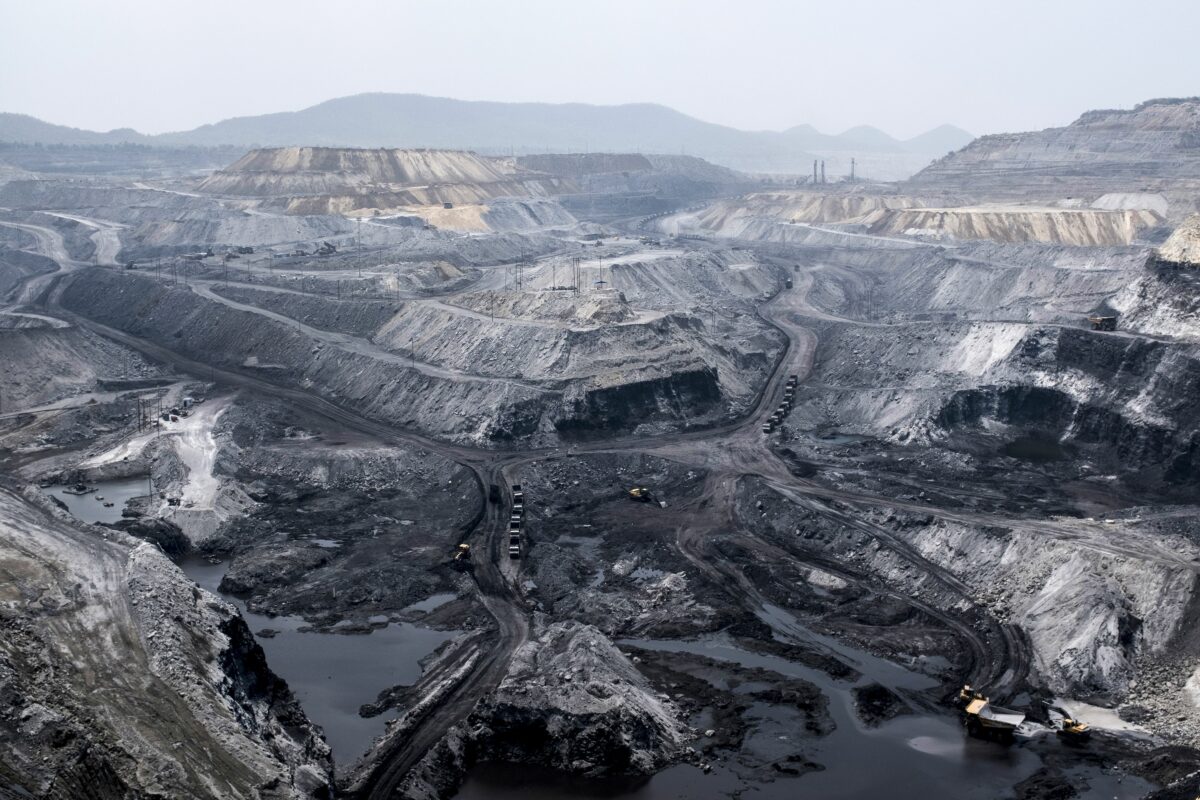Humans form part of a large variety of living organisms on the planet. We are one of more than 800-million species that occupy, or once occupied, the planet we call Earth. Our collective existence on the planet is about 0.115% of Earth’s total lifespan, making it hard to grasp the fact that our impact far exceeds any other species to date.
Earth’s 4.6-billion-year tenure has witnessed millions of cataclysmic moments, tremendous volatility and multiple extinction events that give way to new life forms. The delicate conditions that make Earth conducive for life to thrive are an inconspicuous ongoing process that shapes the entire biosphere. They are Earth’s orbital and rotational spin, solar radiation distribution, the atmosphere and Earth’s positioning in the solar system.
The latter describes a seamlessly symphonic manner in which life was shaped and formed. Any minuscule disruption to this system would result in large-scale extinction and worldwide catastrophe in ways we have never seen before. Planet Earth has a chaotic and violent history, which included at least five mass extinctions, some predating the dinosaurs, and through it all Earth stood tall.
For a broader context, the planet has witnessed the aeons, three eras (under the Phanerozoic Eon), 11 periods and seven epochs. The latest, called the Holocene, which started 10 000 years ago, is epitomised by the evolution of modern humans, namely Homo sapiens sapiens.
Our ancient ancestors, prehistoric humans, appeared in the mid-to-late Pleistocene epoch about 100 000 years ago in the form of various hominid species. Astonishingly, this means that there was more than one species of human beings on the planet in different regions during this window.
Modern humans emerge as the major survivors at the start of the Holocene epoch, largely due the global geological changes imposed by the end of the last Ice Age.
The sudden global increase in temperatures meant adaptation measures were imposed onto all living species. Key evolutionary adaptation techniques were necessary to out compete rival competitors and the conditions seemingly or rather thankfully favoured our first group of modern humans.
The ability to use tools, grow crops and alter the environment to suit our conditions gave our ancestors a competitive edge. Rival hominid species probably struggled to adapt to the warmer temperatures and likely suffered bloody encounters with modern humans. Eventually they became the first victim of human-induced extinction … nor would they be the last.
For thousands of years modern humans lived in harmony with nature. Subsistence living cultivated a minimalist mindset when it came to consumption. With the concept of money and unlimited wealth unbeknown to them, people bartered for goods and services while existing in small village communities.
Within 7 000 years later, the human race was well in tune with the concept of harvesting goods from nature. The concept of trade, money (gold, silver, bronze and iron) and travel at an intercommunity level was a precursor to the most dominant single species the earth has ever witnessed.
Numerous wars were waged, empires were established, mass communities formed and humans would go on to invent incredible feats.
But three inventions were most significant: fire, the wheel and ships.
By the 12th century, the human footprint was apparent and the mass exploitation of the ecosystem was epitomised by explorers’ reaching new pristine lands, and establishing gradual pillars of a global interconnected trade system, initiated by the spice trade and silk road routes.
The Anthropocene: the modern human era
The most significant moment would come in the late 18th century, when England experienced the first wave of factory mass industrialisation. The early 19th century signalled a new official epoch in earth’s history: the Anthropocene epoch, translating to the modern human era.
This era is significant for humans’ ability to extract from nature without control. Humanity partnering with machines to alter and subjugate the environment to suit our needs was a revolutionary step for both the planet, humans and the entire biosphere.
Until fire was discovered, nearly all carbon dioxide emissions were speedily swept up by biological producers (trees, plants, diatoms and photosynthetic algae and bacteria). The planet was largely on a carbon negative net balance during the Ice Age in the early-to-mid Holocene.
But the balance would be quickly tipped to an overwhelming positive through the accelerated burning of coal, oil and trees. The natural carbon cycle of the ecosystem was officially altered and this would be the sad state of things to come beyond this point.
We are currently living through the sixth major extinction event.
Much like the early Pleistocene, global temperatures are sharply rising. But this time, the sheer scale of the rise is not natural but artificially manufactured. Unlike the end of the Ice Age, the rate of global warming is exponential, not gradual.
The rate of species extinctions is at its highest in human history. We are losing species faster than we can study them, mainly through habitat destruction and large-scale commercial pollution. We are single-handedly devastating the entire global ecosystem in ways we could not fully comprehend on every ecological sphere. Air, oceans, land: none is spared. The industrial complex is systematically and efficiently decimating the planet in the name of economic growth.
The previous five extinction events resulted in over 90% of all living species wiped off the planet primarily due to a 10-degree global average temperature increase. Millions of volcanic chambers spewed various greenhouse gases such as sulphur dioxide, hydrogen sulphide and carbon monoxide, but carbon dioxide was the main culprit for spiking global temperatures.
The mass extinctions took thousands of years to materialise. At our current rate of fossil fuel emission we would manage to achieve this level of extinction in less than 400 years of industrialisation.
The Anthropocene age is largely driven by mass exponential consumerism leading to mass overharvesting and exploitation of the ecosystem in exchange for financial wealth and decadence. Mass extraction, in the form of mining, commercial fishing and deforestation, lead to environmental crimes, drastically eating away at our quality of life, polluting our food, health, minds and facilitating the moral degeneration of society. It fosters a consumer-based culture that reinforces the accumulation of material wealth in an attempt to fill an inner void.
The disconnection between man and nature indirectly led to the formation of the novel coronavirus, which has subjected us to the world’s first global pandemic.
This is a sign of things to come in terms of how events will systematically unfold in the turn of the mid-to-late 21st century.
A climate crisis
The tell-tale signs of a global climate crisis were first detected in the late 1940s, when climate scientists discovered that global temperatures and carbon dioxide pollution levels were consistently on a sharp rise. The more information was gathered, the more startled scientists became about this phenomenon.
The first set of solar panels introduced to the world was in the late 1960s. The technology existed but sadly was suppressed by industry giants to buy more time.
Climate change cannot be defined as a single “natural” disaster or a global pandemic wave like the Covid-19 outbreak. It is a culmination of natural disasters on steroids collectively breaking down the wider interconnected ecosystem, to deliver the most devastating events simultaneously and continuously over multiple generations non-stop.
With wave after wave of intense climate disasters, it will not simply pass and no miracle solutions from a lab can curb it. Once we are past the point of no return, the global devastation will be relentless. The only solution is prevention, proactively introducing means to curb greenhouse gas emissions as soon as possible.
We have seen that, contrary to popular belief, the dinosaurs were not the first living set of biota (living organisms) to face mass extinction. The Anthropocene era is another extinction phase, in which the planet will eventually survive and reset over centuries long after humans have left. By continually plundering the ecosystem’s natural resources we are doing far more harm to our population than the actual planet. No amount of money printing, political bureaucracy and exponential GDP growth will do us any good once the manure hits the fan.
The problem is the unwillingness to work with nature. Humans are part of the ecosystem and we are subject to ecological rules. Our interactions with nature can be improved by simple acts stemming from awareness: by choosing not to litter, separation of our waste, limiting energy consumption, showing a consumer preference for environmentally sustainable products and sharing awareness where possible.
The onus is on us because the mandate to save the planet and humanity is far too big to mandate politicians and big businesses. Our industries and politicians will not save us from this alone. A lot of work is being invested in the science community to reach the common citizen and children on how each can play their part. New research papers recommending solutions are published regularly and multinational conferences such as COP can foster multilateral cooperation. A coordinated strike against environmentally unethical corporations and the fossil-fuel sectors is needed.
Mankind remains unopposed at the peak of the planet’s food chain. Our devastation and subjugation of planet Earth is no longer in question. Our ambition for growth, trade and prosperity singled us out to be more than just a participatory species. We have become an apex keystone player in all environments.
The laws of nature do dictate that for every upward swing in population number, a mass decline is inevitable and humans — much like any other animal — will not be spared from this model. We should all do more because we are all citizens of this burning planet.




